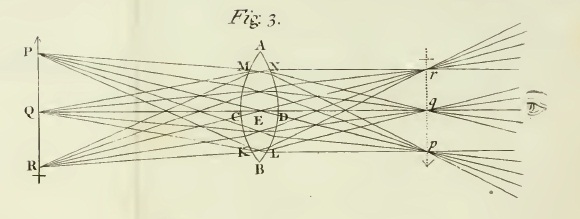
By CARL ZIMMER
Charles Darwin considered the evolution of the human eye one of the toughest problems his theory had to explain. In “On the Origin of Species,” he wrote that the idea that natural selection could produce such an intricate organ “seems, I freely confess, absurd in the highest possible degree.”
But Darwin dispelled that seeming absurdity by laying out a series of steps by which the evolution could take place. Making this sequence all the more plausible was the fact that some of the transitional forms Darwin described actually existed in living invertebrates.
Now, a team of American and European researchers report that they have discovered an eye that could represent the first step in this evolution. They have found, in effect, a swimming eyeball.
“This is in no way the ancestor of the human eye, but it’s the first time we have had a model of it,” said Yale Passamaneck, a postdoctoral researcher at the University of Hawaii. He and his colleagues report the discovery in the online journal EvoDevo.
The researchers made the discovery while studying a species of brachiopods, or lamp shells, which live in shells but are marine worms unrelated to mollusks like clams and oysters. Lamp shells have existed for over half a billion years, but their biology has long remained a mystery — including the simple question of whether they can see.
Four-day-old lamp shell larvae, for example, have puzzling dark spots on either side of the front end of their bodies. Recently, Carsten Lüter, a biologist at the Berlin Museum of Natural History, and his colleagues dissected the eyespots of some lamp shell larvae. They discovered that each spot was actually a pair of neurons, one for capturing light and one containing pigment. The neurons connected to a brainlike clump of neurons inside the larva.
Their anatomy suggested the spots were simple eyes. So Dr. Lüter and his colleagues contacted Dr. Passamaneck and his colleagues at the University of Hawaii, who are experts on the genes for animal photoreceptors. The Hawaii researchers discovered that, indeed, photoreceptor genes were active in the dark spots.
But to be thorough, Dr. Passamaneck checked to see if the photoreceptor genes were active at other stages. “I thought, ‘I’m just going to eliminate that possibility,’ ” he said.
Just the opposite happened. Dr. Passamaneck discovered that the genes were active much earlier, just 36 hours after fertilization, when the lamp shell embryo was merely a cup-shaped mass of a few hundred cells.
Dr. Passamaneck was baffled. “There are no neurons at that stage,” he said. Nevertheless, it was clear that the outer surface of the cup was covered with photoreceptors.
To see if the embryos were doing something with the light, Dr. Passamaneck and his colleagues put a light on one side of a dish of embryos. The lamp shell embryo is covered with tiny beating hairs, which it uses to swim in a spiral pattern. Dr. Passamaneck found that after 20 minutes, twice as many embryos would end up on the illuminated side of the dish as on the dark side.
Dr. Passamaneck and his colleagues hypothesize that the cells can detect the direction of light because it is blocked in some directions by the embryo’s yolk. It can then use this information to change the rhythm of its hair.
It is possible, Dr. Passamaneck said, that in the course of evolution, our own eyes started out as swimming eyeballs. Only later did the job of catching light get relegated to only some cells, which could send signals to their neighbors. And only much later did these specialist cells relay signals to brains.
Todd Oakley of the University of California, Santa Barbara, an expert on the evolution of vision, called the results “tantalizing.” But he cautioned that just because the photoreceptor gene was active in the early embryo, that did not necessarily mean that the lamp shells were able to see. “Other possible photoreceptive mechanisms should also be ruled out,” Dr. Oakley said. “Correlation does not mean causation.”
Dr. Passamaneck is making plans for these sorts of studies. For now, though, he remains a bit stunned at what he has stumbled across.
“It’s like Yogi Berra said,” he said. “You can observe a lot by watching.”

No hay comentarios:
Publicar un comentario